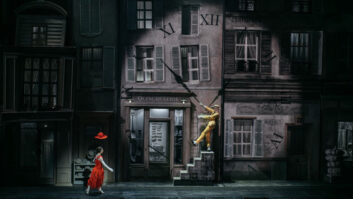
“In both the theatre and show industry, people are looking for something new and different to the conventional LED par or moving head,” explains Simon Bennett, sales and development, Nicolaudie. “Now we see 3D video matrixes and pixel mapped moving heads. This is generating a marked increase in demand for more DMX control channels. A system that was only really designed for moving head, scanner and par control with a few thousand channels is now being asked to process millions of channels. In future I believe a revision of the DMX system is required to stay at the forefront of the industry as other systems such as DALI (from the architectural/building control industry) and video-based protocols are now catching up.”
The remote device management (RDM) standard is being implemented into fixtures and controllers, although the industry uptake has been slower than initially expected. An add-on to DMX, it will provide bidirectional data flow to remote luminaires to monitor their status and enable greater levels of remote device set-up and management, including DMX address range allocation.
Chauvet’s Michael Brooksbank (pictured) highlights another trend: “Lighting designers are using video as a part of their designs. From a controller standpoint, more media servers are being controlled by the lighting console, sometimes with the elimination of a separate video server, by integrating video control into the lighting console. The net effect is that theatrical controller and concert controller technologies are merging.”







